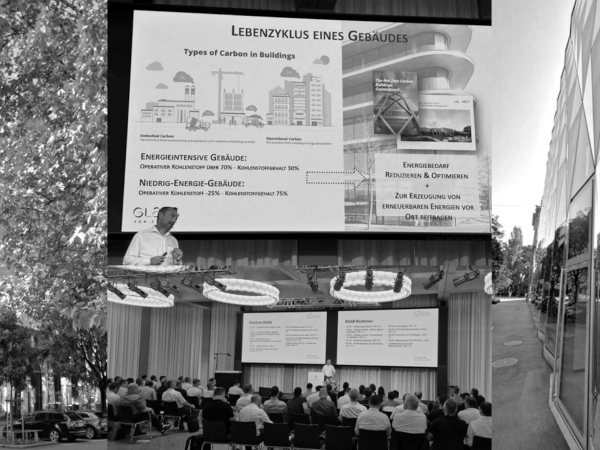The glazing industry, once primarily focused on providing light and views, has evolved into a sophisticated sector at the forefront of architectural innovation, sustainability, and technological advancement. Far from mere transparent barriers, modern glass solutions are now integral components of building performance, aesthetic appeal, and occupant well-being. This article delves into the current news and overarching trends shaping the global glazing industry, highlighting key drivers, emerging technologies, market dynamics, and future outlook.
The Green Imperative: Sustainability and Energy Efficiency Drive Innovation
Perhaps the most dominant force reshaping the glazing industry is the relentless push towards sustainability and energy efficiency. With climate change concerns and stringent building codes demanding lower carbon footprints and reduced energy consumption, glass manufacturers and innovators are responding with groundbreaking solutions.
1. Advanced Coatings and Smart Glass:
Low-emissivity (Low-E) coatings remain a cornerstone, significantly improving thermal performance by reflecting infrared light while allowing visible light to pass through. However, the next generation of smart glass is rapidly gaining traction. Electrochromic, thermochromic, and photochromic glass can dynamically adjust their tinting properties in response to electrical signals, temperature changes, or light exposure, respectively. This allows for real-time control over heat gain, glare, and privacy, optimizing indoor comfort and drastically reducing HVAC loads. Companies like SageGlass and View Glass are leading this segment, expanding applications from commercial facades to residential windows.
2. Vacuum Insulated Glass (VIG):
VIG, once a niche product, is becoming more mainstream due to its exceptional thermal insulation properties, often surpassing triple-pane units in performance while maintaining a thinner profile. By creating a vacuum between two panes of glass, VIG virtually eliminates conductive and convective heat transfer, making it ideal for passive houses and net-zero energy buildings. The increasing affordability and production scale of VIG are making it a compelling option for architects seeking maximum energy efficiency.
3. Building Integrated Photovoltaics (BIPV):
BIPV glass, which incorporates solar cells directly into the glazing unit, is transforming building facades into active power generators. These transparent or semi-transparent panels not only provide natural light and thermal insulation but also convert sunlight into electricity, offsetting a building’s energy demands. Advances in cell technology and aesthetic integration mean BIPV is no longer limited to utilitarian applications but is being incorporated into high-design projects, representing a significant step towards truly energy-positive buildings.
4. Circular Economy and Recyclability:
The industry is increasingly focusing on the lifecycle of glass products. Efforts are underway to enhance the recyclability of end-of-life glazing, reduce waste in manufacturing, and incorporate recycled content into new glass production. This commitment to circularity aligns with broader environmental goals and reduces reliance on virgin raw materials.
Technological Marvels: Innovation Redefining Possibilities
Beyond sustainability, technological advancements are revolutionizing every aspect of the glazing industry, from manufacturing to installation and functional capabilities.
1. Automation and Robotics:
In manufacturing, automation and robotics are enhancing precision, efficiency, and safety. Robotic arms handle large and heavy glass panels, reducing the risk of human error and injury. Similarly, on construction sites, robotic glazing systems are emerging for installing oversized glass units, speeding up construction timelines and improving safety for workers operating at height.
2. Digital Fabrication and Customization:
CAD/CAM software and advanced CNC machinery allow for intricate glass shapes, precise cuts, and customized finishes that were once impossible or prohibitively expensive. This enables architects to push design boundaries, incorporating complex curves, bespoke patterns, and unique textures into their projects.
3. Advanced Materials Science:
Research into new glass compositions is yielding stronger, lighter, and more durable products. Chemically strengthened glass, Gorilla Glass-like applications for architectural use, and ultra-thin glass are expanding the possibilities for façade design, interior applications, and even structural elements. Self-cleaning glass, coated with titanium dioxide, uses UV light to break down organic dirt, making maintenance easier and more sustainable.
4. Augmented Reality (AR) and Virtual Reality (VR):
AR and VR tools are being adopted for design visualization, allowing clients and stakeholders to experience proposed glazing solutions in a realistic virtual environment. For installers, AR can overlay installation instructions onto the real-world view, improving accuracy and efficiency.
Evolving Aesthetics and Performance: Architectural Demands
Modern architecture increasingly demands glazing solutions that offer not just transparency but also enhanced performance and aesthetic flexibility.
1. Large Format Glass and Minimalist Framing:
The trend towards expansive glass panels and ultra-slim, minimalist frames continues unabated. Architects seek to maximize natural light, create seamless indoor-outdoor connections, and achieve sleek, unobstructed views. This necessitates stronger glass, innovative structural support systems, and advanced sealants capable of handling the increased loads and thermal movements of larger units.
2. Acoustic Performance:
As urban environments become denser, acoustic insulation is a critical performance requirement. Laminated glass with specialized interlayers, asymmetrical glass thicknesses, and inert gas-filled insulating glass units (IGUs) are engineered to significantly reduce noise transmission, creating quieter and more comfortable interior spaces.
3. Safety and Security Glazing:
Beyond basic impact resistance, the demand for high-performance security glazing is growing. This includes blast-resistant glass for government and commercial buildings, bullet-resistant glass for high-security applications, and hurricane-resistant glass for regions prone to extreme weather events. These solutions often involve multi-layered laminated glass with robust interlayers designed to absorb energy and maintain integrity even after severe impact.
4. Dynamic Facades and Kinetic Architecture:
Some cutting-edge projects incorporate kinetic glazing systems that can move, slide, or pivot, allowing facades to dynamically respond to environmental conditions or programmatic needs. While still niche, these represent the ultimate fusion of form, function, and technological innovation in glazing.
Market Dynamics and Economic Headwinds
The global glazing industry is experiencing robust growth, driven by urbanization, infrastructure development, and increasing awareness of sustainable building practices. However, it also faces significant economic headwinds and challenges.
1. Supply Chain Disruptions:
The aftermath of the global pandemic continues to impact supply chains, leading to raw material shortages (sand, soda ash, energy for production), increased shipping costs, and extended lead times for glass products and components. This volatility necessitates strategic sourcing and closer collaboration between manufacturers, suppliers, and contractors.
2. Raw Material and Energy Costs:
Glass manufacturing is an energy-intensive process. Fluctuations in energy prices (natural gas, electricity) directly impact production costs, which are often passed on to consumers. Similarly, the cost of specialized coatings, interlayers, and framing materials can influence market pricing.
3. Skilled Labor Shortages:
The complexity of modern glazing systems requires highly skilled labor for fabrication, handling, and installation. A persistent shortage of trained glaziers and technicians poses a challenge for project timelines and quality assurance, driving the adoption of automation and prefabrication techniques.
4. Regional Growth Disparities:
While global growth is positive, specific regions exhibit varying growth rates. Asia-Pacific, driven by rapid urbanization and infrastructure development in countries like China and India, remains a major growth engine. North America and Europe see steady demand, particularly for renovation and energy-efficient upgrades, alongside new construction.
The Road Ahead: Challenges and Opportunities
The glazing industry is poised for continued transformation. The convergence of sustainability goals, digital technologies, and evolving architectural demands presents both challenges and unparalleled opportunities.
Challenges:
- Cost vs. Performance: Balancing the higher upfront costs of advanced glazing solutions with their long-term energy savings and performance benefits.
- Standardization and Integration: Ensuring seamless integration of diverse smart glass technologies and complex glazing systems into broader building management systems.
- Talent Development: Addressing the skilled labor gap through comprehensive training programs and vocational initiatives.
Opportunities:
- Retrofit Market: A massive opportunity lies in upgrading existing buildings with high-performance glazing to improve energy efficiency and extend their lifespan.
- Modular and Prefabricated Solutions: Increased adoption of off-site fabrication and modular glazing units can improve quality, reduce waste, and accelerate construction.
- Data-Driven Design: Leveraging data analytics and IoT sensors within smart glass systems to optimize building performance and occupant comfort in real-time.
- Health and Well-being: Further research and development into glass solutions that enhance natural light, reduce glare, and filter harmful UV rays, contributing to biophilic design principles and occupant health.
Conclusion
The glazing industry is no longer just about windows; it’s about dynamic facades, energy-generating skins, intelligent interfaces, and critical structural components. Driven by a powerful synergy of environmental imperative, technological innovation, and architectural ambition, the sector is continuously pushing the boundaries of what glass can achieve. As we look ahead, collaboration across the value chain – from material scientists and manufacturers to architects, developers, and installers – will be paramount in realizing the full potential of glass to create more sustainable, resilient, and inspiring built environments for the future. The next decade promises even more spectacular breakthroughs, solidifying glazing’s role as a cornerstone of modern construction.

